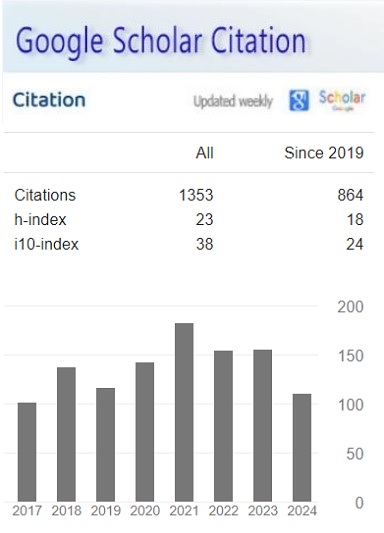Market Segmentation, Targeting, and Positioning Using Machine Learning
Keywords:
Abstract
The occurrence of numerous rivals and industrialists has created a lot of pressure between rivalry companies to go in search of new customers and at the same time working to maintain the existing ones. Owing to this, the necessity for a new customer service policy or strategy becomes essential irrespective of the business size. Moreover, the capability of any company that wants to remain in existence and growth as well needs to understand its clients and also delivers necessary customer support to make available targeted client services and develop branded clients’ service policy. This understanding is conceivable via organized client service. The respective segment devises consumers who share similar market potentials. Big data philosophies and machine learning devise appropriate means of promoting better recognition and approval of computerized client segmentation methods in good turn of outdated business analytics that frequently lead to any meaningful approach that can keep or source for a new customer while the client disreputable is very growing by the day. This study makes use of the k-means clustering algorithm for this determination. The Sklearn public library was established for the k-Means algorithm and the package is competent by means of a 100-model two-parameters dataset generated or collected from the retail trade. Features of an average figure of client buying and average figure of periodic consumers.
References
Griva, A., Bardaki, C., Pramatari, K. and Papakiriakopoulos, D. (2018). Sales business analysis: Customer categories use market basket data. Systems Expert Systems, 100, 1-16. DOI: https://doi.org/10.1016/j.eswa.2018.01.029
Hong, T. and Kim, E. (2011). It separates consumers from online stores based on factors that affect the customer's intention to purchase. Expert System Applications, 39 (2), 2127-2131. DOI: https://doi.org/10.1016/j.eswa.2011.07.114
Jerry, W. T. (2007). Accessed at: www.decisionanalyst.com on May 12, 2021.
Lakshmi Narayana S., Suneetha Devi J., Bhargav Reddy I., Harish Paruchuri. (2012). Optimizing Voice Recognition using Various Techniques. CiiT International Journal of Digital Signal Processing, 4(4), 135-141
Neogy, T. K., & Paruchuri, H. (2014). Machine Learning as a New Search Engine Interface: An Overview. Engineering International, 2(2), 103-112. https://doi.org/10.18034/ei.v2i2.539 DOI: https://doi.org/10.18034/ei.v2i2.539
Paruchuri, H. (2015). Application of Artificial Neural Network to ANPR: An Overview. ABC Journal of Advanced Research, 4(2), 143-152. https://doi.org/10.18034/abcjar.v4i2.549 DOI: https://doi.org/10.18034/abcjar.v4i2.549
Paruchuri, H. (2017). Credit Card Fraud Detection using Machine Learning: A Systematic Literature Review. ABC Journal of Advanced Research, 6(2), 113-120. https://doi.org/10.18034/abcjar.v6i2.547 DOI: https://doi.org/10.18034/abcjar.v6i2.547
Puwanenthiren, P. (2012). Market Classification and Its Impact on Customer Satisfaction and Special Reference to the Commercial Bank of Ceylon PLC.‖ Global Journal of Management and Business Publisher Research: Global Magazenals Inc. (USA). Volume 12 Issue 1.
Sulekha, G. (2011). The basis of market segmentation: a critical review of the literature. European Journal of Business and Management, 3(9).
Vadlamudi, S. (2015). Enabling Trustworthiness in Artificial Intelligence - A Detailed Discussion. Engineering International, 3(2), 105-114. https://doi.org/10.18034/ei.v3i2.519 DOI: https://doi.org/10.18034/ei.v3i2.519
Vadlamudi, S. (2017). Stock Market Prediction using Machine Learning: A Systematic Literature Review. American Journal of Trade and Policy, 4(3), 123-128. https://doi.org/10.18034/ajtp.v4i3.521 DOI: https://doi.org/10.18034/ajtp.v4i3.521
Vadlamudi, S. (2018). Agri-Food System and Artificial Intelligence: Reconsidering Imperishability. Asian Journal of Applied Science and Engineering, 7(1), 33-42. Retrieved from https://journals.abc.us.org/index.php/ajase/article/view/1192
Vaishali R. Patel and Rupa G. Mehta. (2011). Impact of Outlier Removal and Normalization Approach in Modified k-Means Clustering Algorithm. IJCSI.
Vishish R. P. and Rupa G. M. (2011). Impact for External Removal and Standard Procedures for JCSI. International Science Issues, 8(5,2): 1694-0814.
Downloads
Published
How to Cite
Issue
Section
License
Copyright (c) 2019 Asian Journal of Applied Sciences & Engineering

This work is licensed under a Creative Commons Attribution-NonCommercial 4.0 International License.








